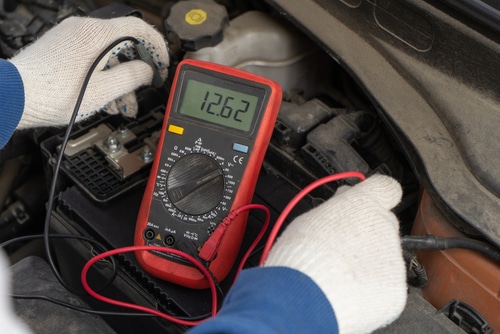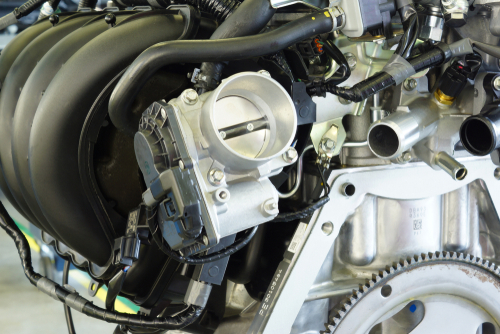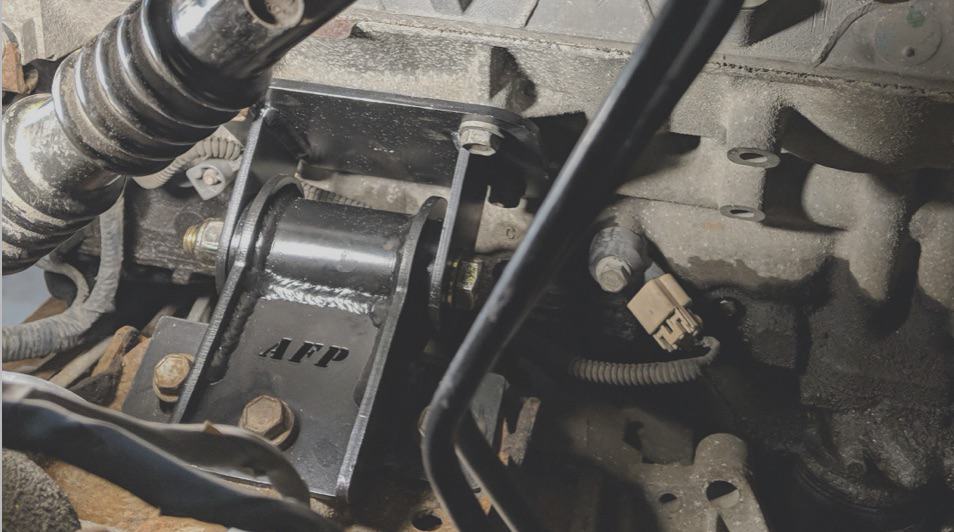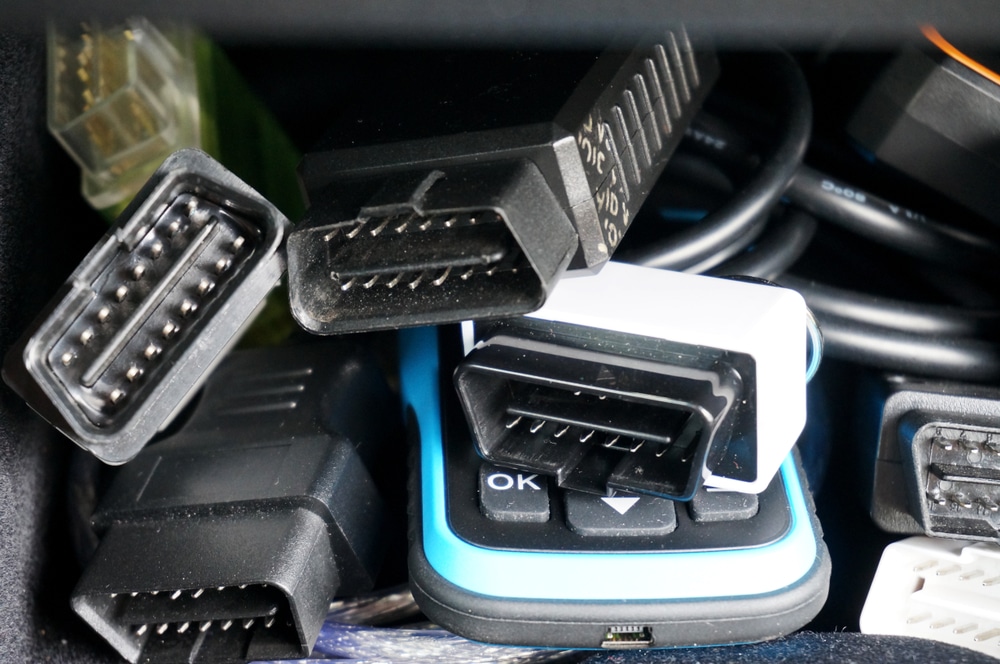Is your check engine light on? You might be dealing with a P0030 code. This pesky little trouble code indicates a problem with the HO2S Heater Control Circuit (Bank 1, Sensor 1).

Think of your car’s oxygen sensor as a tiny weatherman, constantly monitoring the air-fuel mixture in your engine. When it gets chilly, this sensor needs a heater to work properly.
If the P0030 code pops up, it means there’s a glitch in the heating system for the oxygen sensor on the first bank of your engine.
You might notice your fuel economy taking a nosedive or your engine running a bit rough. But with a little know-how and some elbow grease, you can get to the bottom of this issue and have your ride purring like a kitten in no time.
Key Takeaways
- P0030 indicates a problem with the oxygen sensor heater circuit
- Symptoms may include decreased fuel efficiency and rough engine performance
- Proper diagnosis and timely repair can prevent more serious engine issues
Decoding the Code: Understanding P0030
Buckle up, gearheads! We’re about to dive into the mysterious world of P0030. This pesky code might be giving your ride the blues, but don’t worry – we’ll crack it together.
The Basics of OBD-II and P0030
You’ve probably seen that glowing check engine light before. It’s your car’s way of saying, “Hey, something’s not quite right!”
That’s where OBD-II comes in. It’s like your car’s personal detective, always on the lookout for trouble.
P0030 is a diagnostic trouble code that pops up when there’s an issue with your oxygen sensor heater. Think of it as your engine’s nose – it sniffs out the perfect air-fuel mixture. When it gets a cold, things can go haywire.
Your trusty OBD-II scanner is the tool that decodes these automotive hieroglyphics. It’s like having a translator for your car’s secret language!
Bank 1 Sensor 1: Locating the Culprit

Now, let’s play a game of automotive hide and seek. Bank 1 Sensor 1 is our target, and it’s not as tricky to find as you might think.
“Bank 1” refers to the side of the engine with cylinder number one. In most cars, that’s the side closest to the front of the vehicle.
“Sensor 1” is usually the first oxygen sensor you’ll encounter in the exhaust stream.
This sensor is like the canary in the coal mine for your exhaust system. It’s the first to detect any funky business in your engine’s emissions. When its heater circuit goes on the fritz, that’s when P0030 rears its ugly head.
Remember, finding this little troublemaker is half the battle. Once you’ve got it in your sights, you’re well on your way to getting your ride back in tip-top shape!
Symptoms and Impacts of a Faulty HO2S Heater

When your HO2S heater starts acting up, you’ll notice some telltale signs. Your trusty ride might start behaving like a moody teenager, and your wallet could feel a bit lighter at the pump.
The Tell-Tale Check Engine Light
You know that pesky little light on your dashboard? Well, it’s about to become your new best friend.
When the HO2S heater control circuit goes haywire, your check engine light will likely pop on faster than you can say “Oh, no!”
But don’t panic just yet. This little illuminated companion is just trying to tell you something’s up with your oxygen sensor. It’s like your car’s way of saying, “Hey buddy, I need a little TLC over here!”
Performance Issues: From Hesitation to Fuel Inefficiency
Ever feel like your car is playing hard to get? That’s what a faulty HO2S heater can do.
You might notice your vehicle hesitating more than a shy teenager at a school dance. It’s not cute, trust me.
Your fuel efficiency? It’ll take a nosedive faster than a seagull spotting a dropped sandwich.
You’ll find yourself visiting the gas station more often, wondering if your car developed a drinking problem.
And let’s not forget about performance. Your engine might run rougher than a cowboy’s chin after a week-long cattle drive. It’s not just annoying – it’s a surefire way to turn your smooth ride into a bucking bronco.
Diagnosing the Heater Control Circuit Malfunction

Got a P0030 code lighting up your dash? Don’t sweat it! Let’s roll up our sleeves and get to the bottom of this oxygen sensor heater hiccup. We’ll use some nifty tools and give your car a once-over to pinpoint that pesky problem.
Using the Right Tools: OBD-II Scanner Insights
First things first, grab your OBD-II scanner. This little gadget is your best friend when it comes to cracking the P0030 code.
It’ll tell you exactly which sensor is throwing a tantrum – in this case, Bank 1, Sensor 1.

But don’t stop there! Your scanner might reveal other codes hiding behind P0030. These could be clues to a bigger issue, like a wiring problem or a blown fuse. Think of it as your car’s way of playing detective.
Check the live data stream too. If the heater circuit’s not pulling its weight, you’ll see it in the numbers.
A properly functioning sensor should heat up quickly after startup. If it’s dragging its feet, you’ve got a problem on your hands.
Visual Inspection: Identifying Obvious Flaws
Time to get your hands dirty! Pop the hood and give that oxygen sensor a good look-see. It’s usually hanging out near the exhaust manifold, looking like a spark plug’s cousin.
Check for any visible damage to the sensor or its wiring. Cracked insulation, frayed wires, or corroded connections are all red flags.
Don’t forget to follow the wiring harness back to the engine control module. Sometimes the problem’s not the sensor itself, but the path it uses to chat with the car’s brain.
While you’re in there, give the fuse box a once-over. A blown fuse could be the culprit behind your heater circuit woes. It’s a quick fix if that’s the case, but it might point to a deeper electrical issue if it keeps happening.
The Repair Shop: Fixing the P0030 Code

Got a pesky P0030 code lighting up your dash? Don’t worry, you’re about to become an oxygen sensor whisperer. Let’s dive into the nitty-gritty of getting that code cleared and your ride purring like a kitten again.
Step-by-Step Repair Procedures
First things first, grab your trusty diagnostic tool and confirm that P0030 is indeed your uninvited guest. Now, roll up those sleeves and let’s get to work:
- Locate the culprit: Bank 1, Sensor 1 oxygen sensor. It’s usually hanging out near the exhaust manifold.
- Inspect the wiring. Look for any signs of damage, corrosion, or loose connections. Sometimes, a little electrical TLC is all you need.
- If the wiring checks out, it’s time to test the sensor’s heater circuit. Your multimeter is your best friend here.
- No luck? Time to say goodbye to that old sensor. Unscrew it (careful, it might be a bit stubborn) and pop in a shiny new one.
- Clear those codes and take your ride for a spin. If that check engine light stays off, congratulations! You’ve just saved yourself a bundle.
To Replace or Repair: Considerations and Costs
Now, let’s talk turkey. Replacing an oxygen sensor isn’t always cheap, but it’s often your best bet.
A new sensor will set you back anywhere from $50 to $300, depending on your ride’s make and model.
Labor costs? If you’re handy with a wrench, you can save a pretty penny doing it yourself. But if you’d rather leave it to the pros, expect to shell out $50 to $150 for labor.
Repairing the wiring? That’s usually cheaper, but it’s like putting a Band-Aid on a broken arm if the sensor itself is kaput.
Sometimes, biting the bullet and replacing the sensor is the smartest move for your wallet in the long run.
Preventative Measures and Best Practices

Keep your engine purring like a contented kitten by giving it some TLC. A little elbow grease goes a long way in avoiding that pesky P0030 code.
Maintaining an Efficient Exhaust System
You know what they say – a happy exhaust system means a happy car.
Start by giving your exhaust system a once-over every few months. Look for any signs of rust, cracks, or loose connections.
Got a rattle? Don’t ignore it! That could be your catalytic converter waving a white flag. Make sure it’s securely fastened and not clogged up like your uncle’s nose after Thanksgiving dinner.
Keep an ear out for unusual noises. If your car starts sounding like a dragon with indigestion, you might have exhaust leaks. Fix those pronto to avoid messing with your O2 sensors.
Regular Check-Ups: Avoiding the Inevitable
Just like you wouldn’t skip your annual physical (right?), don’t skimp on your car’s check-ups.
Get that air-fuel mixture checked regularly. It should be as balanced as your diet… or at least, as balanced as you claim your diet is.
Have a pro test your O2 sensors every 60,000 miles or so. These little guys work harder than a one-armed wallpaper hanger, so they deserve some attention.
• Check engine light on? Don’t panic, but don’t ignore it either.
• Keep an eye on your fuel efficiency. If it drops, your O2 sensors might be crying for help.
• Use quality fuel and oil. Your car’s not a garbage disposal – treat it right!
Remember, a stitch in time saves nine. Or in car terms, a sensor replaced saves a whole heap of trouble down the road.
Frequently Asked Questions
Dealing with a P0030 code can be tricky, but don’t worry – we’ve got you covered. Let’s dive into some common questions about this pesky little problem that might have your engine light glowing like a Christmas tree.
What symptoms may indicate a P0030 code has been triggered in a vehicle?
If your car suddenly develops a drinking problem (the fuel kind, not the boozy kind), you might be dealing with a P0030 code.
You’ll likely notice decreased fuel mileage and that pesky check engine light will be lit up like it’s trying to guide Santa’s sleigh.
Your vehicle might also start running a bit rough, like it had one too many the night before.
Don’t be surprised if it’s sluggish on acceleration – it’s not being lazy, just oxygen-deprived.
How do you troubleshoot a P0030 diagnostic trouble code in a car?
First things first, grab yourself an OBD2 scanner – it’s like a stethoscope for your car.
Plug it in and let it work its magic to confirm that P0030 is indeed your culprit.
Next, channel your inner Sherlock and inspect the wiring around your oxygen sensor.
Look for any signs of damage, corrosion, or loose connections. It’s like a game of “Where’s Waldo?” but with wires.
What could be the reasons for a heater control circuit malfunction in an oxygen sensor?
Oh, the possibilities! Your sensor could be throwing a fit for a few reasons.
Maybe it’s gotten lazy and decided to retire early, or perhaps the wiring has decided to play a game of “let’s not conduct electricity today.”
Sometimes, it’s as simple as a blown fuse or a faulty relay. Other times, you might be dealing with a PCM that’s lost its marbles and isn’t controlling the heater circuit properly.
Could you guide me on where to locate the Bank 1 Sensor 1 in a vehicle?
Ah, the elusive Bank 1 Sensor 1 – it’s like playing automotive hide and seek.
You’ll find this little troublemaker between the engine and the catalytic converter on Bank 1 of the engine.
Bank 1 is typically the side of the engine with cylinder number one.
If you’re still stumped, your car’s manual might have a treasure map to help you find it.
What are common fixes for an O2 sensor heater circuit failure for Bank 1 Sensor 1?
Sometimes, the fix is as simple as reconnecting a loose wire – it’s like relationship counseling for your car’s electrical system.
Other times, you might need to replace the oxygen sensor itself.
If you’re really unlucky, you could be looking at replacing the entire wiring harness. It’s like giving your car a whole new nervous system.
Is it possible to DIY the replacement of an HO2S heater control, and what might it cost?
For the brave DIY warriors out there, replacing an oxygen sensor is definitely doable.
You’ll need a few tools, some elbow grease, and perhaps a colorful vocabulary for when things don’t go smoothly.
Cost-wise, an oxygen sensor can run you anywhere from $50 to $300, depending on your car’s make and model.
If you’re not feeling up to the task, a mechanic might charge you anywhere from $150 to $500 for parts and labor.
